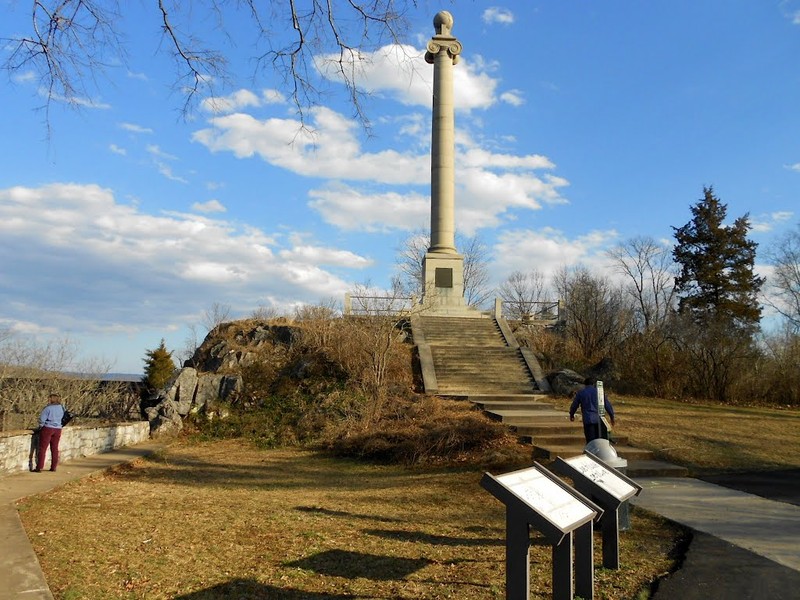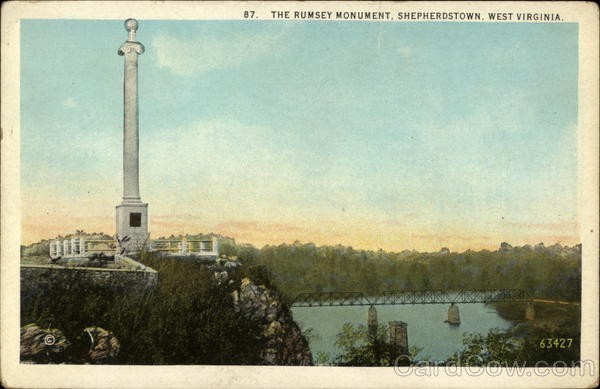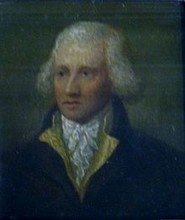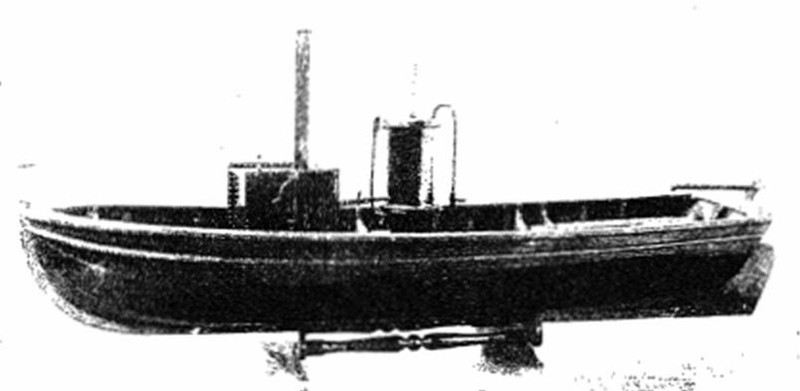The Rumsey Monument
Introduction
Text-to-speech Audio
Images
James Rumsey Monument

Postcard of Rumsey's Monument

Portrait of James Rumsey

Model of Rumsey's Steamship

Backstory and Context
Text-to-speech Audio
James Rumsey was born in 1743 to a Maryland farm family. Rumsey volunteered for service in the Revolutionary War. Though Rumsey’s mechanical aptitude was apparent to many in the community he also engaged in several other ventures. He associated with Nicholas Orrick in a mercantile venture. He was also involved in the operation of a boarding house, and he served as the Secretary of the Potomac Improvement Company.1
Rumsey’s work on his steamship began in earnest when he left his post with the Improvement Company. In October 1783, Rumsey’s first steamship completed a successful trial. Accompanied by his brother-in-law Joseph Barns and business associate Nicholas Orrick, the group conducted the trial at night so as not to be discovered. After the successful trial, Rumsey submitted petitions to the Maryland Legislature and to the General Assembly of Virginia as a means to protect his invention. Among the individual inventions described in the petitions were a “cylindrical saw mill” and a “pipe boiler”. The U.S. had not established a patent office at this time. Both States passed acts protecting Rumsey’s work, protecting his work for a period of 10 years. George Washington witnessed a functioning model of Rumsey’s boat in 1784, and provided testimony to the ships functionality in Rumsey’s petitions. The two men corresponded as Rumsey’s work advanced.2
In 1785, Rumsey directed Joseph Barnes, who constructed the hull, and Blacksmith Captain Jacob Haynes, who aided Rumsey with the ironwork; in building, a full-scale steam vessel.3 Improvements were made between the working models and the boat used in the public trial. The original “pipe boiler” was improved, as were other mechanisms that carried steam.4 Working in great secrecy, the hull was moved to Sir John’s Run, near Shenandoah Falls, by Barns and Dr. McMechin. Mechanical components were manufactured in Shepherdstown, Baltimore, and at the Antietam works. Parts were stored in the cellar of Francis Hamilton. As the next trial date approached, the men began to assemble components. Some of the parts did not fit properly and required additional time to correct and assemble.5
Rumsey’s design was unique. His design featured a steam-operated piston that drew water up into a chamber on the up-stroke, and discharged water out the stern on the down-stroke.6This design generated the force required to propel Rumsey’s boat forward against the current of the Potomac River. In the summer of 1786, high water on the Potomac caused the boat to move down stream where it crashed. Repairs were made throughout the spring and summer of 1787.7 A public trial on the Potomac River at Shepherdstown was set for December 3, 1787.
Time was not an ally of James Rumsey. A rival, John Fitch an inventor working in Philadelphia, was also constructing a steamship. George Washington wrote to Rumsey on January 31, 1786 imploring him to bring his ship to public trial. Washington stated that Finch asked Washington to testify to the differences between the two designs. Washington admitted that he was not at liberty to divulge detailed information about Rumsey’s design.8 A media war developed between the two men and their supporters.
Rumsey’s ship was a success. Witnesses stood on the hills, looking down at the river. Rumsey’s ship carried 7 to 8 tons of stone and several passengers. The ship achieved a speed of three miles an hour. Maneuvering up and downstream the ship completed its trials to the cheers of the crowd which include Revolutionary War General Horatio Gates.9
Encouraged by Benjamin Franklin, Rumsey set out for England in 1788 in order to secure patents and to continue his work. The First Rumseian Society was established with Ben Franklin as president.10 Rumsey was able to secure four patents while in England.11 Rumsey raised money toward the construction of a new design while in England. The ship was completed and was set for trial on December 22, 1792. Rumsey died the day before his new ship was to launch.12 The Second Rumseian Society was formed in 1903 in order to construct a monument in the hills above the Potomac River in Shepherdstown. The Third Rumseian Society formed in 1984 in order to build a functioning replica of Rumsey’s steamship. The project was entitled the “Rumsey Experiment” was successful, the replica maneuvering the Potomac River.13 The replica of Rumsey’s steamship is housed in the Rumsey Boathouse behind the Entler Hotel in Shepherdstown.